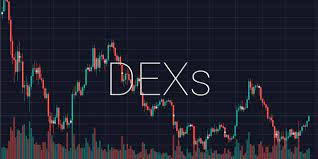Uniswap: A Revolution in Decentralized Finance (DeFi)
In the ever-evolving world of cryptocurrency, Uniswap has emerged as one of the most influential platforms in the Decentralized Finance (DeFi) ecosystem. As the blockchain space continues to reshape the financial industry, Uniswap stands out as a pioneer in the realm of decentralized exchanges (DEXs). In this article, we will explore the concept of Uniswap, its underlying technology, and how it is revolutionizing the way people trade digital assets.
What is Uniswap?
Uniswap is a decentralized exchange protocol built on the Ethereum blockchain that allows users to trade ERC-20 tokens directly with one another, without the need for a central authority or order book. In simpler terms, it is a platform where buyers and sellers can exchange cryptocurrencies directly in a peer-to-peer manner, without intermediaries like traditional exchanges (e.g., Binance, Coinbase). Unlike centralized exchanges that rely on matching buyers and sellers using an order book, Uniswap uses an automated market maker (AMM) model to determine the prices of assets and facilitate trading.
The Core Concept: Automated Market Makers (AMMs)
At the heart of Uniswap’s design is the concept of an Automated Market Maker (AMM). Traditional exchanges rely on buyers and sellers to create liquidity, and prices are determined based on supply and demand. Uniswap’s AMM, however, uses smart contracts to automate this process. Instead of relying on a traditional order book, liquidity providers (LPs) contribute funds to liquidity pools, which are smart contracts that hold pairs of tokens. These pools allow users to swap tokens with each other directly, and the price of each token is determined algorithmically based on the ratio of tokens in the pool.
When users want to swap tokens on Uniswap, they are essentially trading with the liquidity pools rather than with other individuals. This allows for seamless, permissionless trading 24/7, as the liquidity is always available, provided there is enough capital in the pools.
How Does Uniswap Work?
Uniswap operates on the Ethereum blockchain, and all transactions are executed through smart contracts. To facilitate a trade on Uniswap, a user needs to connect a Web3 wallet (like MetaMask or Trust Wallet) to the platform and choose the token pair they wish to trade. Once the user selects the tokens, Uniswap’s AMM algorithm calculates the price based on the current liquidity in the pool and the desired swap amount.
Users who wish to trade on Uniswap must pay a small fee, typically 0.3% of the transaction value. This fee is distributed to liquidity providers as a reward for contributing their assets to the liquidity pools. The more liquidity a provider contributes, the larger their share of the transaction fees, thus incentivizing users to participate in the liquidity provision process.
Liquidity Pools and Yield Farming
Liquidity providers (LPs) are essential to the Uniswap ecosystem. To become an LP, users need to deposit equal values of two tokens (for example, ETH and USDC) into a liquidity pool. In return for providing liquidity, LPs receive LP tokens, which represent their share in the pool. These LP tokens can be used to redeem their share of the pool, along with any earned fees.
In addition to earning trading fees, LPs can participate in yield farming on Uniswap. Yield farming is the process of earning additional rewards, often in the form of governance tokens, by providing liquidity to a platform. Uniswap’s governance token, UNI, is given to LPs as part of a rewards program, enabling them to participate in the decision-making process for the platform’s future.
Advantages of Using Uniswap
- Decentralization: Uniswap is decentralized, meaning there is no central authority controlling the platform. This reduces the risk of censorship, hacks, and other vulnerabilities typically associated with centralized exchanges. Anyone can use Uniswap, regardless of their location or background, and all trades are executed transparently on the Ethereum blockchain.
- Permissionless and Open-Source: Uniswap’s code is open-source, meaning anyone can review or contribute to its development. Additionally, the platform does not require users to create an account or go through a Know Your Customer (KYC) process. Users retain full control of their assets throughout the trading process.
- Liquidity for New Tokens: One of the major advantages of Uniswap is that it enables the creation of liquidity pools for any ERC-20 token. This opens up the possibility for new projects to list their tokens without the need for approval from centralized exchanges, offering greater access to trading opportunities for both developers and investors.
- Price Discovery: The AMM model used by Uniswap ensures that prices are always determined based on supply and demand. Since there is no central order book, prices are continuously updated in real-time as trades occur, ensuring accurate price discovery.
- Accessibility: Uniswap is accessible to anyone with an internet connection and a supported Web3 wallet. Users do not need to sign up or provide personal information, making it an attractive option for those who value privacy.
Uniswap V3: A New Era of Efficiency
Uniswap’s evolution has been marked by the release of Uniswap V3, which introduced several major improvements to the protocol. One of the most notable features of V3 is concentrated liquidity. In previous versions, liquidity providers had to provide liquidity across the entire price range of a token pair. With concentrated liquidity, LPs can now choose a specific price range where they want to provide liquidity, resulting in more efficient use of capital.
Another key upgrade in Uniswap V3 is the introduction of multiple fee tiers, allowing liquidity providers to select the fee structure that best suits their risk tolerance and desired returns. This flexibility gives LPs more control over their rewards and enables the protocol to attract a wider range of liquidity providers.
Risks and Challenges
While Uniswap offers numerous benefits, it is not without its risks. One of the main concerns is impermanent loss, which occurs when the price of the tokens in a liquidity pool diverges significantly. LPs may suffer a loss if they withdraw their liquidity when the price of one of the tokens has changed significantly compared to when they initially added it.
Additionally, since Uniswap operates on the Ethereum blockchain, users are subject to gas fees, which can become quite expensive during periods of high network congestion. This makes small trades less economically viable, especially for those with limited funds.
The Future of Uniswap and DeFi
Uniswap’s success has paved the way for a new wave of decentralized finance protocols and decentralized exchanges. As the DeFi space continues to grow, Uniswap is likely to play a central role in shaping the future of finance. The platform’s open-source nature, constant innovation, and strong community support position it as a leading force in the decentralized ecosystem.
Looking ahead, Uniswap may expand to other blockchains beyond Ethereum, further increasing its reach and accessibility. Additionally, as Layer 2 scaling solutions like Optimism and Arbitrum become more widely adopted, Uniswap can benefit from lower fees and faster transaction times, making the platform even more attractive to users.
Conclusion
Uniswap has revolutionized the way people trade digital assets by offering a decentralized, permissionless, and efficient alternative to traditional exchanges. Through its innovative use of automated market makers and liquidity pools, Uniswap has created a more inclusive and accessible financial ecosystem. Despite some challenges, such as impermanent loss and high gas fees, Uniswap remains a vital player in the rapidly evolving DeFi landscape. As the platform continues to evolve, it is clear that Uniswap will play a crucial role in the future of decentralized finance.


